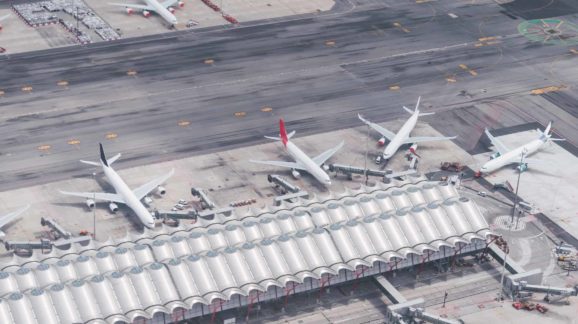Sustainable Aviation Fuel Provisions In Build Back Better – A Slippery Slope?

Photo Credit: Getty
There are many carrots for low-carbon alternatives to fossil fuels in the Build Back Better legislation passed by the House and now being considered by the Senate, including generous tax credits for so-called sustainable aviation fuels (SAFs). Joining the companies making SAFs in support of these provisions are the aircraft manufacturers and the airlines themselves. The industry may see these provisions as a relatively risk-free way to say they are addressing climate change—the cost is subsidized by taxpayers and no company is required to use any more SAFs than they want. However, these measures may prove to be a slippery slope leading to mandates. The Renewable Fuel Standard (RFS) should serve as a cautionary tale.
Under the bill’s provisions, every gallon of qualifying SAF gets a tax credit from $1.25 to $1.75 per gallon. The $1.25 credit is for aviation fuels with lifecycle greenhouse gas emissions 50 percent lower than petroleum-derived fuel; the sliding scale adds one cent for each percentage point above 50, so fuels that are 100 percent lower get the full $1.75.
Aviation fuel blenders could add as much as 50 percent SAFs to their petroleum-based fuels, but would not be required to use any. As with the RFS, many of the qualifying fuels use various forms of biomass as a feedstock.
The Biden administration has set a goal of 3 billion gallons of SAFs per year. This goal is likely optimistic. For example, production of cellulosic ethanol and other advanced biofuels under the RFS has fallen well below projections. But if the goal is reached it would mean the tax credits would cost at least $5 billion dollars annually.
Build Back Better also provides for $300 million dollars in grants for low-emission aviation technologies, including research and development of SAFs as well as plant construction.
For the airline industry, these provisions may seem flexible enough to be harmless, but the history of the Renewable Fuel Standard should serve as a warning. The RFS was preceded by federal tax credits for qualifying biofuels added to the gasoline and diesel fuel supply for cars and trucks, along with generous cash grants to producers of those fuels. But in 2005 Congress expanded the program into a mandate by creating the RFS, which requires those fuels to be used in specified amounts. In 2007 the mandate was increased several-fold. The Environmental Protection Agency’s recently announced 2022 quota for the four categories of biofuels in the RFS is 20.77 billion gallons, adding to already-high pump prices and to concerns about how much renewable fuels can be safely added to the conventional fuel supply. Similarly, the SAF provisions in Build Back Better could later be expanded into a mandate.
A number of the companies that make SAFs also produce biofuels that qualify under the RFS, and were instrumental in getting the RFS enacted. It is quite possible that these companies will use some of the proceeds from the government largess in Build Back Better to lobby for mandates, as they successfully did with the RFS.
Despite the mandate’s costs, the RFS has satisfied few environmentalists. Many green groups have had second thoughts about the environmental benefits of the program. In fact, most have moved the goalposts by proclaiming all internal combustion engine vehicles unacceptable and demanding a wholesale switch over to electric vehicles.
By themselves, the SAF handouts in Build Back Better are far from the worst provisions in the bill. However, the experience with the RFS is clear—any initial SAF program will come under pressure to be expanded into something considerably costlier.